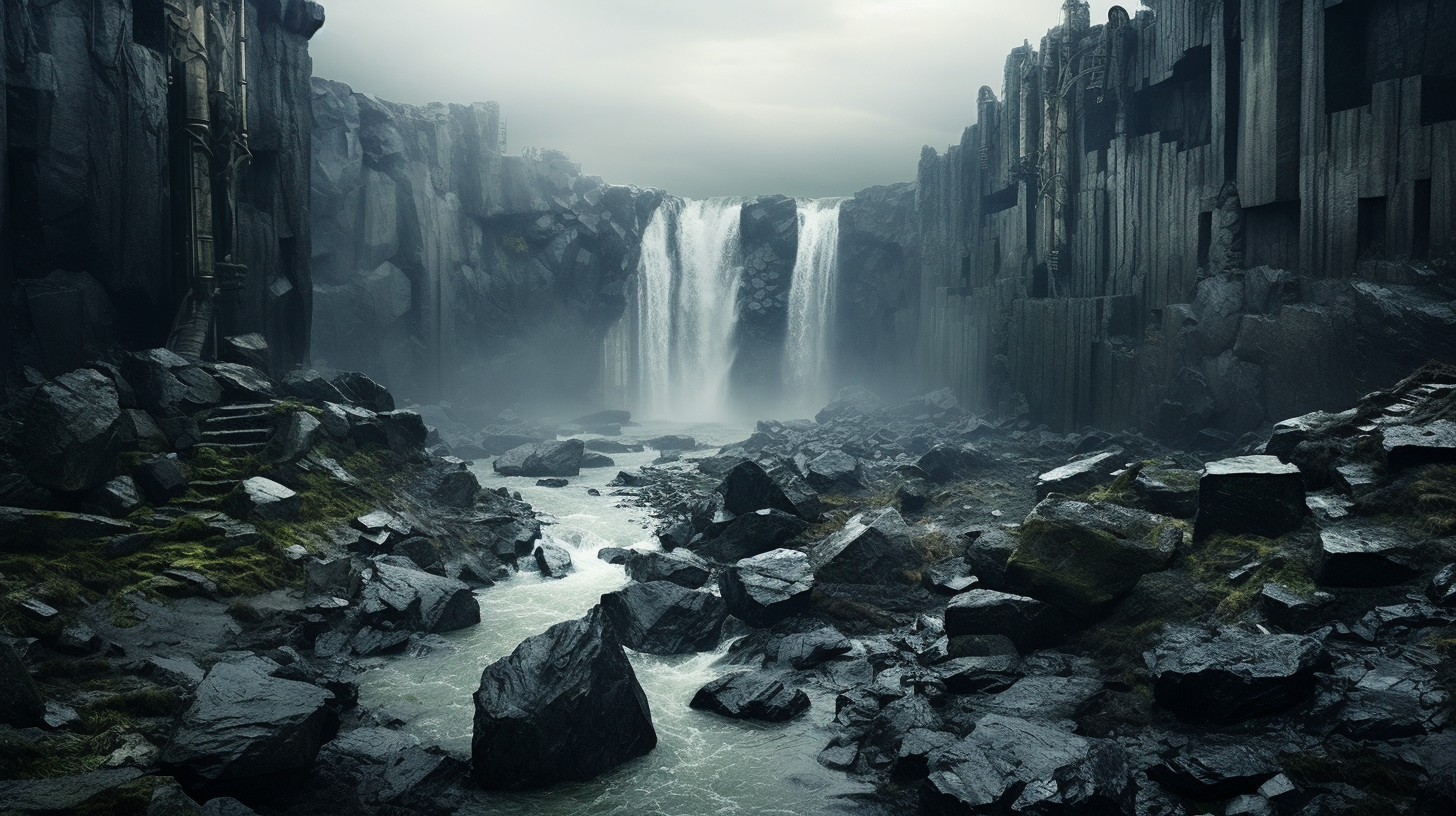The mournful howl of the wind resonates through the barren cliff-sides where water once cascaded down with a mighty force. In the age of ecological neglect that has befallen us, the world’s majestic waterfalls now stand as desiccated relics of a bygone era. They were once spiritual havens, tourist meccas, and bastions of biodiversity — now, they are but cracked and arid cliffsides, the mirror into our soul’s desolation.
Where Niagara Falls once roared, a mere trickle now weeps, a poignant symbol of our environmental apathy. The once-potent Victoria Falls, affectionately known as Mosi-oa-Tunya, or ‘The Smoke That Thunders’, is reduced to a quiet mist that no longer shrouds the rainforest in life-sustaining moisture. This transformation is not just a visual tragedy; it represents a profound loss of ecosystem integrity, cultural identity, and natural heritage.
As a grim reflection of this dry reality, species extinction rates around these former oases have skyrocketed. The birds, insects, and flora, uniquely adapted to the microclimates created by the waterfalls’ spray have vanished. Gone is the lyrical song of the Splendid Fairy-wren that once danced across the breeze near Australia’s Wentworth Falls. Absent too, are the vibrant wings of the butterflies that graced Iguazu Falls, bridging Argentina and Brazil. Their disappearance is our doing, a consequence of our relentless emission of greenhouse gases and the subsequent climate change.
Experts attest to the profound impact on local communities who once depended on these falls for sustenance and spiritual fulfillment. ‘The cascading waters were not just water sources; they were integral to the cultural fabric of the communities,’ laments one anthropologist. Their loss signifies a deeper disruption in the lives and beliefs of indigenous peoples and local economies too, where the once-thriving ecotourism industry provided a livelihood for thousands.
Sadly, the grizzly pivot from abundance to absence has been met with a global shrug. International efforts to combat climate change appear lackluster at best, as the treasure troves of our planet are drained and discarded. World leaders make promises, but the waterfalls pay no heed to empty vows. Yawning chasms await where forceful, life-giving torrents once flowed, testament to our own moral hollowing.
While the waterfalls may no longer flow, humanity’s tears should. But they don’t. We’ve grown accustomed to this desiccated world, one where our children will hear tales of ‘water that once fell from the skies’ as if speaking of mythic gardens of abundance. Our planet’s once thunderous heartbeat is quieting, and our will to reverse this fate seems quieter still.
Thus, whether by the whispering ghosts of Angel Falls in Venezuela or the dried out basin of Yosemite Falls in the United States, we are reminded of our failures. What were once symbols of the Earth’s natural grandeur have become graveyards of neglect, echoing chambers that amplify our collective inertia.
In this dire context, few avenues remain. Artists endeavor to capture the grandiosity of these falls in their bygone days, and scientists work tirelessly to innovate on conservation techniques, but the scale of destruction outpaces even their noblest efforts. It stands as a heavy question mark — can we ever hope to reinstate these natural wonders, or are we to merely muse upon their glory in history books?
The waterfalls, once revered, are now rejected, monuments to a path we wish we had never trodden. But it is on this path that we stand, staring at the shadows of former marvels, pondering whether, in this world we’ve tailored with apathetic hands, there’s room for remorse and redemption.
